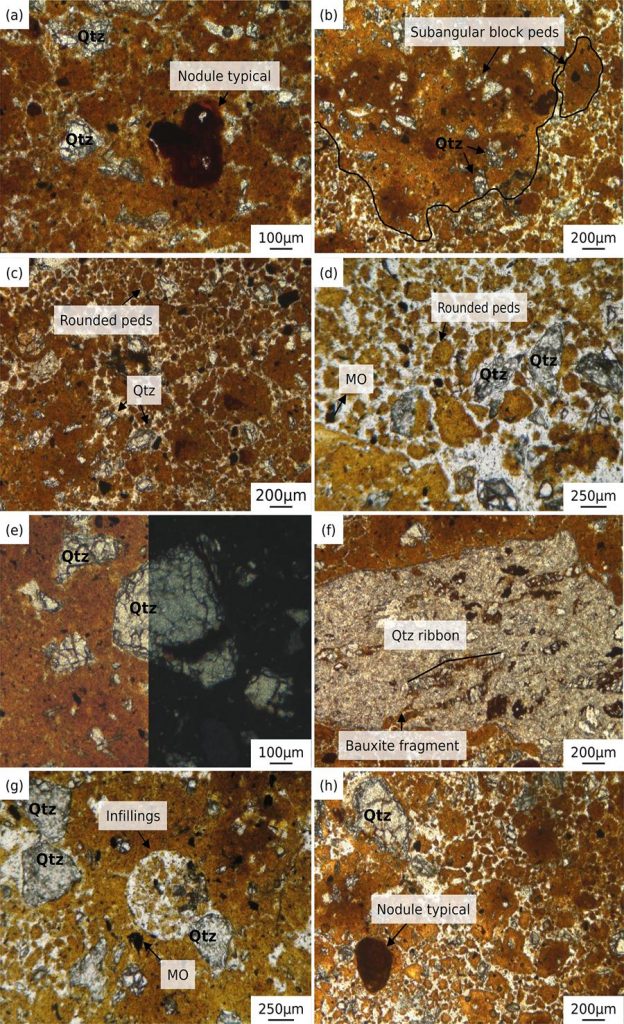Rev. Bras. Ciênc. Solo.2017;41:e0160507.
Genesis of Soils from Bauxite in Southeastern Brazil: Resilication as a Soil-Forming Process
30/Oct/2017
DOI: 10.1590/18069657rbcs20160507
ABSTRACT
Pedological studies using X-ray diffraction (XRD), X-ray fluorescence (XRF), optical microscopy, and scanning electron microscopy (SEM-EDS) showed a Xanthic Ferralsol formed from the degradation of bauxite on a slope in the Caparaó region, in southeastern Brazil. We found a decrease in the number and size of bauxite fragments toward the top of the profiles, bauxite fragments that were more degraded at the top of the profiles, transformation of gibbsite into kaolinite, and absolute enrichment in silicon in the mass balance. These indicators suggest that resilication could be the major process responsible for formation of the soil; detailed studies are needed to verify the origin of the silica. The reintroduction of silica into the system occurs by the biogeochemical cycling of vegetation and, in some cases, water table fluctuations, highlighting the role of resilication as a soil-forming process in bauxite-derived soils.
177

